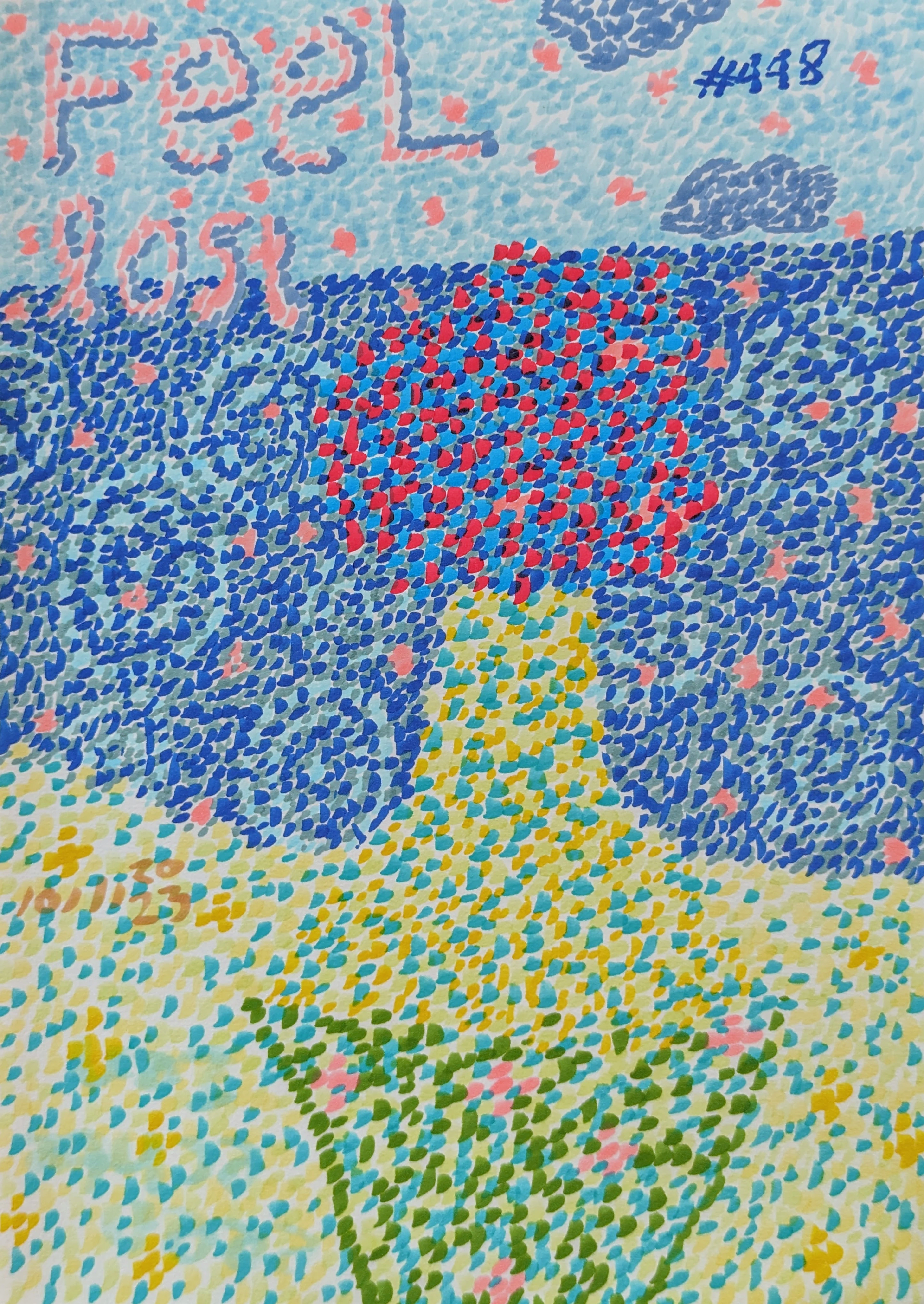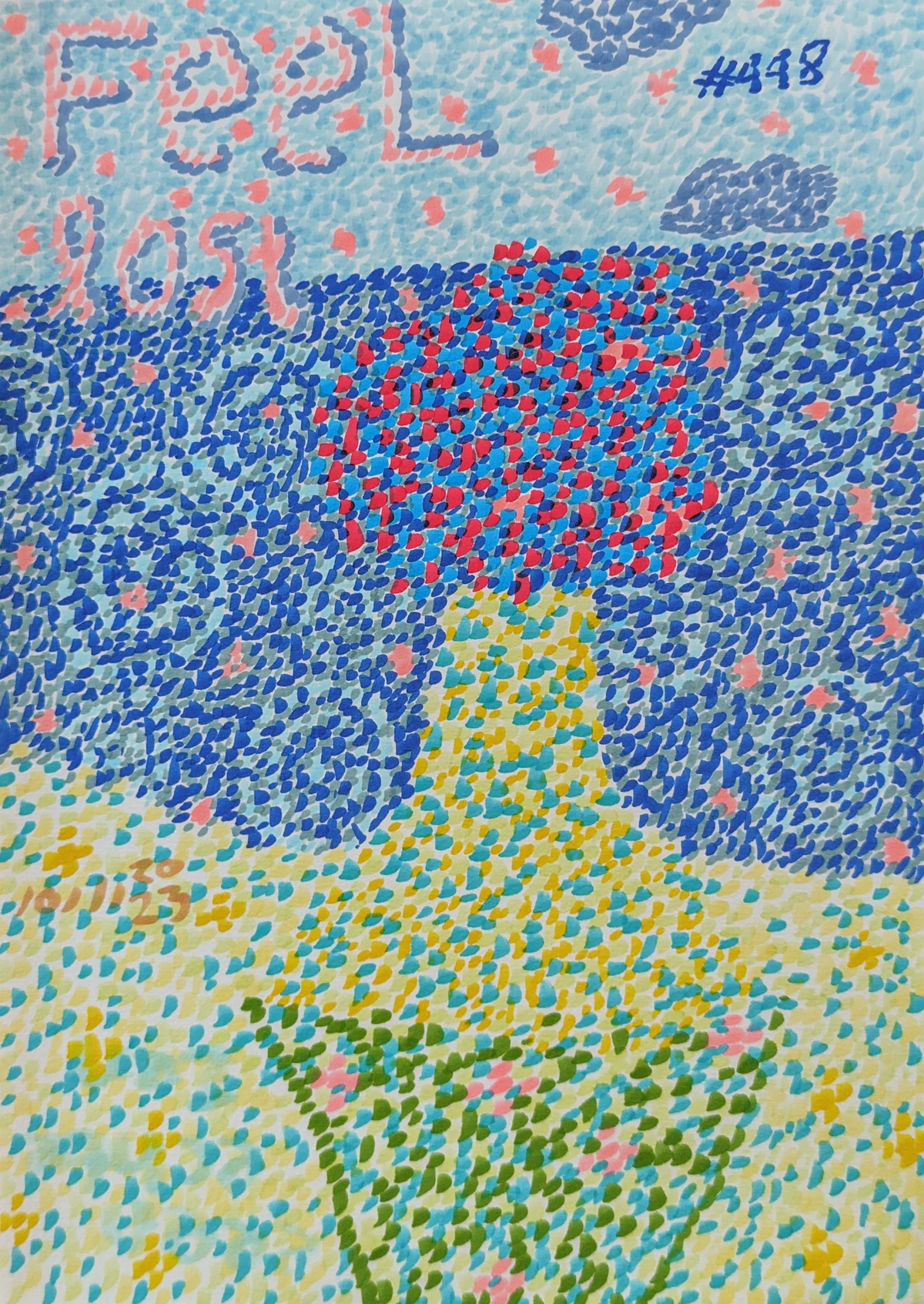
Art Therapy for Grief: Finding Your Way When Words Fail
Explore how art therapy, not artistic skill, helps process grief and loss. Discover personal stories and simple creative exercises to navigate overwhelming emotions.
Art Therapy for Grief: Finding Your Way When Words Fail
I don't know about you, but grief has this peculiar way of stealing your voice, doesn't it? It's like a heavy, unseen cloak that settles over everything, muffling words before they even reach your lips. Trying to explain the aching void, the sudden pangs of memory, or the sheer exhaustion to someone else often feels utterly impossible. And honestly, sometimes, you don't even have the words for yourself.
That's where art, in its quiet, unassuming way, can become a lifeline. It’s not about painting a masterpiece or sculpting something profound; it’s about finding a different language entirely. A language where a smudge of blue can hold a world of sadness, or a vigorous line can express an anger that no sentence ever could.
The Unspoken Language of Loss
When someone we care about deeply leaves our lives, whether through death, the end of a relationship, or even a significant life change, the emotional landscape within us shifts dramatically. We try to put these feelings into words, to articulate the depth of our sorrow or the confusion that washes over us. But grief is often too vast, too complex, too shapeless for the neat confines of human language. It's a torrent that bursts the banks of vocabulary.
I've found myself in those moments, staring blankly at a page, or trying to talk to a friend, only for the right words to elude me. It’s frustrating, isolating even. But what if the "right words" aren't words at all? What if they're colors, textures, or abstract forms? This is the core idea behind art therapy: giving expression to what cannot be said. It’s about recognizing that our internal world isn't always linear or logical; sometimes, it's a vibrant, chaotic splash of paint just begging to be seen. If you've ever felt that struggle to articulate inner turmoil, you might find solace in exploring translating emotion into abstract art: my process of visual expression.
What is Art Therapy (Really)?
Now, before you start thinking, "But I can't even draw a straight line!"—stop right there. Art therapy, in its truest form, has absolutely nothing to do with artistic talent. Zero. Zip. Nada. It’s not about creating something aesthetically pleasing for a gallery wall (though sometimes, a surprising beauty emerges). Instead, it's a therapeutic process facilitated by a trained art therapist, using creative expression to help individuals explore emotions, improve self-esteem, manage stress, reduce anxiety, and come to terms with trauma or loss.
Think of it as a guided journey where the art materials become your medium for introspection and communication. The focus is entirely on the process of creation and what surfaces during that process. It's less about the "what" you make, and more about the "how" you make it and "why" you choose those particular colors or gestures. It’s a wonderful alternative for those who find traditional talk therapy challenging, or simply want another avenue for healing. Many of the principles that help with general stress and anxiety, which I've touched upon in articles like art therapy for anxiety and stress relief, are amplified when dealing with the profound emotions of grief.
Simple Ways Art Can Help with Grief
You don't need a therapist to start experiencing some of the benefits of creative expression in times of grief. There are simple, accessible ways to begin using art as a tool for healing.
Expressing the Unexpressible
Grab some basic art supplies—crayons, markers, watercolors, clay, whatever you have. Instead of trying to "draw something," try to draw or paint how you feel.
- Color Your Grief: If grief feels heavy and dark, maybe you use deep blues or stormy grays. If you feel a flicker of anger, perhaps reds and jagged lines appear. There's no right or wrong. Just let the colors flow. I've often found that the emotional language of color holds more truth than any spoken word. You might be surprised at what emerges, and how simply putting that feeling onto paper can lighten its load, even just a tiny bit. Dive deeper into the psychology of color to understand how different hues might resonate with your inner state.
- Draw a Feeling: Can you draw "sadness"? What shape is it? Is it spiky or soft? Does it fill the whole page or curl up in a corner? Don't overthink it. The act of externalizing these abstract feelings through expressive lines and gestures can be incredibly liberating.
Creating a Memorial
Art can also be a beautiful way to honor and remember what has been lost.
- Memory Collage: Gather photos, letters, ticket stubs, or other small mementos. Arrange them on a piece of paper or canvas. Add colors, words, or drawings around them. This isn't about being perfect; it's about creating a tangible space for your memories, a visual narrative of love and connection.
- Symbolic Object: Find a stone, a piece of wood, or a smooth pebble. Paint or decorate it to represent the person or experience you're grieving. Keep it close, or place it somewhere meaningful. It becomes a quiet, personal reminder.
Finding a Moment of Calm
The act of creation itself can be incredibly grounding. When your mind is racing with sorrow, focusing on a tactile activity can bring you back to the present moment.
- Repetitive Motions: Simple actions like coloring mandalas, doodling patterns, or even just scribbling can be deeply meditative. It's about giving your hands something to do while your mind unwinds. For more ideas, check out art therapy exercises you can try at home or art as therapy: simple exercises to boost creativity and well-being at home. These often involve a kind of mindful engagement that helps create mindful moments.

It's Okay to "Feel Lost" (and Paint It)
That image above, with its swirling colors and the stark text "Feel Lost," resonates deeply with the experience of grief. It’s a powerful acknowledgment that sometimes, that's exactly how it feels. Disoriented, untethered, uncertain of the next step.
Art therapy isn't about finding a quick fix or erasing those feelings. It's about providing a safe space to acknowledge them. To see them. To give them form, however abstract or raw. When I look at a piece like that, I don't see despair as much as I see an honest expression. And there's immense healing power in honesty. It's a reminder that even when we feel utterly adrift, there's still a landscape within us, full of color and movement, even if it's currently veiled by clouds.
Your art doesn't have to be 'good' or 'pretty' or even 'understandable' to anyone but you. It just has to be. It's your personal journey, laid bare on a canvas or a page. And in that vulnerability, there's strength.
Beyond Therapy – Art as a Companion
Grief isn't a linear process; it's a winding, sometimes backtracking, path. Art can be a constant companion on that journey. It can evolve with you, reflecting new understanding, new memories, and eventually, new growth.
I've learned, through my own artistic journey, how profoundly creating can help process life's big questions and transitions. My timeline, for instance, isn't just a list of events; it's a narrative woven with creative responses to challenges. Art allows for continuous dialogue with your inner self, a way to keep engaging with emotions that might otherwise fester or become stagnant.
Perhaps, eventually, you'll find comfort in owning art that speaks to you, art that acts as a visual anchor or a gentle reminder of beauty and resilience. Discovering pieces that resonate can be a quiet act of self-care, a way to surround yourself with visual affirmations of your capacity to feel and to heal. Explore my collection and perhaps find something that brings you a quiet sense of peace at my art shop.
Frequently Asked Questions About Art for Grief and Loss
Do I need to be an artist to benefit from art therapy for grief?
Absolutely not! As I mentioned, art therapy is about the process, not the product. The goal is expression and exploration, not creating gallery-worthy pieces. Your 'art' can be scribbles, colors, shapes, or anything that feels right to you.
What if my art looks "bad" or I don't know what to create?
There's no such thing as "bad" art in this context. Every mark you make, every color you choose, is valid because it comes from you. If you don't know where to start, try focusing on a single emotion you're feeling right now, and pick a color or a type of line that represents it. Or simply experiment with materials – how does the paint feel on the paper? What sound does the crayon make?
Can I do this alone, or do I need a therapist?
You can certainly explore creative expression on your own using simple exercises. Many people find immense comfort in journaling or doodling. However, a trained art therapist can provide guidance, deeper insight, and a safe, structured environment, especially when dealing with intense or complex grief. They can help you interpret what emerges and facilitate deeper healing.
How often should I engage with art during grief?
There's no set schedule. Some days you might feel drawn to it, other days not. Listen to yourself. Even short, spontaneous bursts of creativity can be beneficial. The key is to allow yourself the space when you feel the need, without pressure or expectation.
A Final Brushstroke
Grief is a heavy burden, but you don't have to carry it in silence or solely with words. Art offers an expansive, forgiving space to lay down your feelings, to see them, to sit with them, and slowly, gently, to begin to integrate them into your story. It's not about erasing the pain, but about creating alongside it, acknowledging its presence, and perhaps, in time, finding new colors in the landscape of your healing heart.




